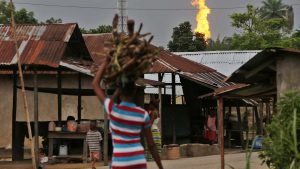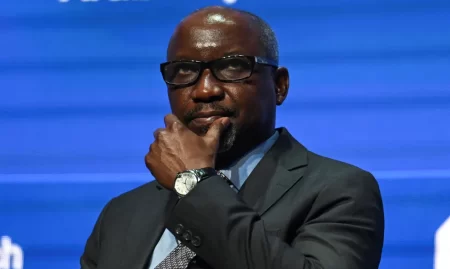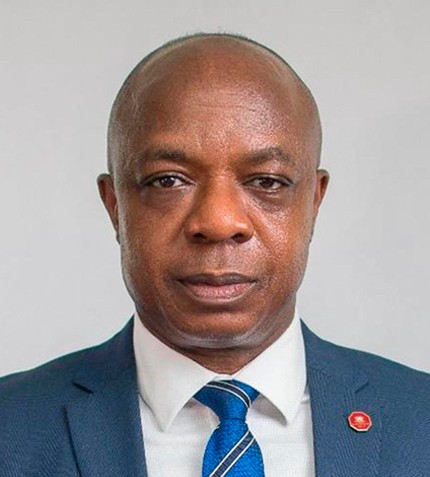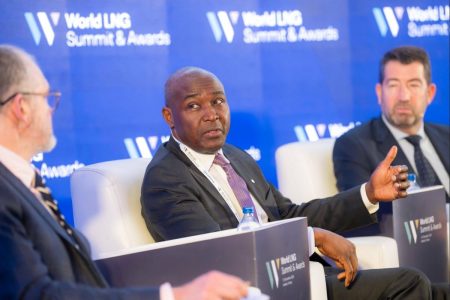
Ike Amos
Dublin Ireland — About three years after the launch of the National Gas Expansion Programme and the ‘decade of gas’ initiative, Nigeria has continuously failed to match words with action and has shown that it lacks the commitment to follow through with its promises and pronouncements, with regards to the development of its immense gas resources.
In the face of worsening poverty, Nigeria continues to miss out on the immense opportunities presented by its huge gas resources to improve the lives of its populace, increase its earnings and grow its economy.
According to statistics from global auditing and services firm, PricewaterhouseCoopers (PWC), effective utilisation of Nigeria’s gas resources would create value addition to the tune of $18.3 billion yearly to the domestic economy through direct economic value addition of $10.5 billion; indirect value addition of $3.4 billion and induced value addition of $4.4 billion.
In addition, the firm added that due to failure to harness the resource, the country is losing out of annual export value of $7 billion and about 6.5 million full time equivalent jobs yearly.
Putting this in perspective, the Nigerian Upstream Petroleum Regulatory Commission (NUPRC), said as at January 1, 2023, the country has natural gas reserves of 208.33 trillion cubic feet, comprising 102.32 trillion cubic feet of associated gas (AG) and 106.51 trillion cubic feet of non-associated gas (NAG).
The NUPRC had attributed the 0.10 per cent rise in the country’s gas reserves as of January 2023, compared with January 1, 2022, gas reserves position, to revisions arising from additional information from new wells, and field development studies.
This position, belaboured over the years, puts Nigeria as the number one country with the highest gas reserves in Africa and ninth in the world.
Sadly, the Federal Government had consistently failed to reap significant economic benefits from the country’s huge gas potential.
It continues to beat imagination that with its enormous gas resources, Nigeria is still battling with poor power supply, with around 4,000 megawatts of electricity for a country with a population of about 200 million people, largely due to the absence of critical power assets.
For instance, PwC noted that notwithstanding the significant gas reserves the country holds, only a small portion is extracted annually, noting that gas production stood at an average of 2.53 trillion cubic feet (TCF) in nearly two decades, which is less than one per cent of the nation’s reserve.
While the country had made meaningful progress in cutting down the volume of gas flared, nothing much had been done to increase gas discovery, ramp up production and improve export and domestic consumption.
In particular, quoting OPEC and World Bank data, Claudia Steuer, Country Manager, International Human Resources Development Corporation (IHRDC), stated that between 2012-22, Nigeria posted the best effort at curbing flaring, among oil-producing nations, as it reduced gas flaring by 45 per cent and flaring intensity by 14 per cent.
He noted that Nigeria flared 25 billion cubic metres (BCM) of gas in 2000 and by 2020, achieved a 71 per cent reduction in the volume of gas flared to 7.2 bcm.
According to him, through Liquefied Natural Gas (LNG), Nigeria effectively converted a wasted resource into about $130 billion in revenue in 20 years, a powerful example no other country has replicated.
“Currently, about $6.5 billion per year of revenue is produced, climbing to about $9 billion when Nigeria LNG Limited Train 7 is operational,” he said.
However, he lamented that billions more in revenue has been lost by the country over its inability to resolve a 20-year dispute involving title to deep-water gas, arising from the interpretation of the Deep-water Production Sharing Contract (PSC) Act of 1999.
This dispute, he explained, halted investment in deep-water oil and gas fields, resulting in loss of billions in investments, revenues, and job creation.
In addition, apart from the gas flare reduction policies, which preceded the Nigerian Gas Flare Commercialisation Programmee (NGFCP), all other gas policies and programmes proposed by the government, inclusive of the NGFCP, had failed to materialise, while billions spent had remained unaccounted for.
For instance, the Federal Government, had in 2020 launched, with much fanfare, the National Gas Expansion Programme and its offshoot, the auto-gas policy, which aims to deepen the use of natural gas at home, for both industrial and personal purpose.
The NGEP, which saw the Central Bank of Nigeria (CBN) setting up a N250 billion intervention fund to support the programme’s initiatives, sought to convert about 40 per cent of vehicles in the country to begin using Compressed Natural Gas, while homes use more of Liquefied Petroleum Gas (LPG).
Like the NGFCP and ‘decade of gas’ initiative, committees of experts were set up and huge financial resources allocated to the committees, yet no white paper was published, or any recommendation made.
In fact, the auto-gas policy was launched without any commitment or plan as to how to help encourage the conversion from petrol to LPG or Compressed Natural Gas (CNG). There was no incentive or guideline on how people can go about converting their vehicles.
In fact, most of these programmes were rested at the end of the tenures of the respective administration or jettisoned whenever a new minister (or minister of state for petroleum resources) was appointed.
For instance, after spending billions on aesthetics, appearances and groundworks, the Olokola Liquefied Natural Gas (OKLNG), Brass LNG and Gas Revolution Industrial Park (GRIP) projects have not gone past the drawing-board stage.
Also, apart from the Ajaokuta-Kaduna-Kano (AKK) pipeline, the status of numerous other gas pipeline projects costing billions of dollars, especially those linking the Niger Delta, southwest and south-south states and other parts of Africa, remain unknown.
The growth recorded in the gas sector is mainly private sector driven, with the government playing little or no role. However, immediately success is recorded in any major endeavour, the government is quick to ascribe it to its ingenuity, such as the floating LNG and CNG projects, among others.
Furthermore, over the years, failure has been recorded in the area of encouraging the use of LPG as the fuel of choice for cooking.
As a result, with a population of about 200 million people, Nigeria’s National Bureau of Statistics (NBS) and other researchers reported that about 140 million Nigerians, representing about 70 per cent of the citizenry still use solid biomass, comprising firewood and charcoal for cooking; 19.8 per cent use kerosene, while the balance of 10.5 per cent and one per cent use gas and electricity respectively.
As increasing number of the population continue to fall into excruciating poverty, with the recent removal of fuel subsidy and floating of the naira, the number of people using solid biomass for cooking would likely have risen to over 160 million.
This is probably why analysts at McKinsey warn that unless the necessary gas infrastructure are put in place, gas demand in Nigeria could outpace supply by 2023, by at least three billion cubic feet per day.
Also, Fitch Solution projected that by 2027, Nigeria’s gas production and utilisation would remain below the federal government’s desired targets, occasioned by lack of accelerated investment in critical gas infrastructure.
With these grim statistics, Nigeria is faced with the choice of growing its gas reserves, increasing its gas production and boosting domestic utilisation of the resources, across the power and industrial sectors and at homes, especially for cooking, or continue to struggle with lower revenue and economic stagnation.
On its part, Professor Yinka Omoregbe, President; and Professor Ben Obi, Vice President (Conferences and Publications), both of the Nigerian Association of Energy Economics (NAEE), argued that Nigeria needed to utilise its immense natural gas resources for the development of its populace.
In a communique issued at the end of its annual conference a few days ago, Omoregbe and Obi and other participants called for the urgent establishment of a framework for natural gas utilisation, as recommended in the Petroleum Industry Act, so as to create an attractive investment climate in the gas sector.
They noted that the current burden of fuel subsidy removal on Nigerians would be lightened by the rapid expansion of measures to speed up the utilisation of natural gas as a substitute for premium motor spirits (PMS).
These, they said, include promoting the activities of the Natural Gas Expansion Programme, the conversion of engines to run on compressed natural gas (CNG), and the speedy deployment of CNG stations all around the country.
They added that: “There is an urgent need to implement Nigeria’s chosen path for energy transition, particularly as domestic natural gas consumption expands and becomes an integral part of the energy mix in the transitioning path to Nigeria’s carbon neutral future. Delays could negatively impact Nigeria’s economic development.”
From the above, unlocking Nigeria’s gas potential and utilising the resources to stimulate economic activities, as PricewaterhouseCoopers posits, has the potential of generating a Gross Value Add (GVA) of $18.3 billion yearly to the domestic economy through direct economic value addition of $10.5 billion; indirect value addition of $3.4 billion and induced value addition of $4.4 billion.
This, PwC said, is in comparison to generating annual export value of $7 billion, adding that harnessing the country’s proven reserves for domestic utilisation can also support 6.5 million full time equivalent jobs yearly.
Steuer also advised that the country’s 20-year impasse on gas title be resolved, so as to unlock the immense wealth in the deep-water oil production segment before it becomes too late for the country to benefit.
Follow us on twitter



